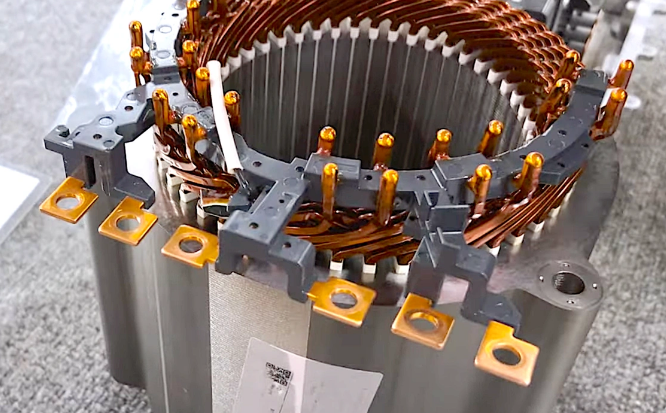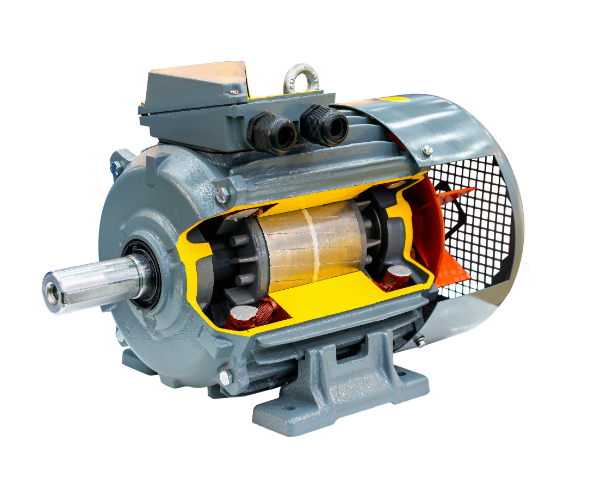The best cable for a 3-phase motor depends on power and conditions. For a 50 HP motor at 460V (65 amps), use a 4 AWG copper cable rated for 600V for runs under 100 feet. Increase to 2 AWG for longer distances to minimize voltage drop. Use XLPE insulation for high-temperature areas.
Voltage Rating
One of the most important factors to be used when wiring a 3-phase motor is the voltage rating on the cable. This rating provides the cable’s capability to handle the applied electrical load in a safe way, without overheating or any breakdown. A common requirement for a motor running at 460V may be at least a cable rated for 600V to ensure a margin of safety against breakdowns. As an example, if there are motors running at 480V in an industrial setup, the cables should be rated for 600V or 1,000V depending on the system design and possible voltage surges. Lower-rated cables would risk insulation failure and possible equipment damage, especially in higher-demand uses where voltage transients occur.
In medium-voltage applications, such as 4,160V, servicing motors on industrial setups requires cables of at least 5,000V rating for operational stability. In manufacturing plants, for example, a 200 HP motor would need medium-voltage cables that have XLPE insulation rated 5,000V and higher. Such cables cost more, upwards of $10-$15 per foot, due to the increased insulation and shielding that it will bear, but serves well in the longevity needed for continuous operations. For large-scale energy applications, motors operating at 13,800V require cables rated for 15,000V or more, with advanced features like water-blocking materials and semi-conductive layers to prevent partial discharge.
The length of the cable run significantly impacts voltage rating and cable selection. For instance, a 50 HP motor running at 460V with a 300-foot cable requires careful calculation to minimize voltage drop. A 6 AWG copper conductor cable rated to carry 600V could achieve a 2.8 percent voltage drop, relatively close to the limit of 3 percent. Also, changing out to a 4 AWG copper cable would drop the voltage drop down to approximately 1.5 percent, assuring better performance and longer motor life. In contrast, a 10 HP motor running at 230V and located only 50 feet from the power source could safely use a smaller 8 AWG cable rated for 300V without significant voltage loss.
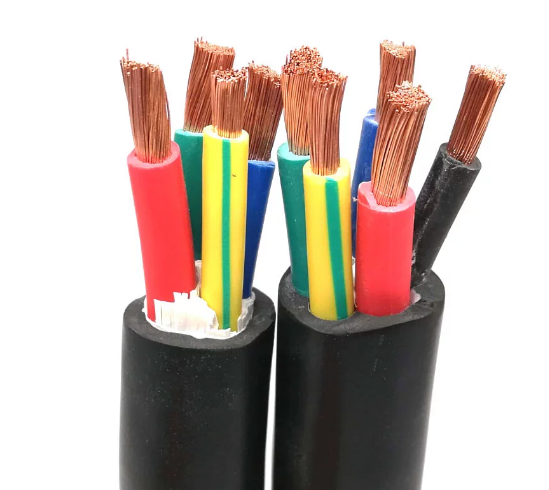
Current Carrying Capacity
Its current carrying capacity is the most critical factor when one has to choose the proper wiring for a 3-phase motor because it has to assure that the cable will bear the full load current of the motor without overheating. For instance, a 10 HP motor running at 230V draws roughly 28 amps. A 10 AWG copper conductor with a current capacity of approximately 30 amps is a proper choice. For the same motor, but mounted further from the power source, and thus with longer cables, an 8 AWG cable rating of 40 amps may be required due to the additional resistance and resulting heat buildup.
For larger motors, the ampacity requirements increase substantially. A 50 HP motor at 460V typically draws about 65 amps. In this regard, a 4 AWG copper cable with 85 amps of current capacity is usually used, allowing a fair amount of overhead for thermal loads and starting surges. For aluminum conductors, which have lower ampacity compared to copper, one may use a 2 AWG aluminum cable with a capacity of 75 amps. This size difference calls for a careful calculation of ampacity, which depends on the conductor material and conditions of installation.
Where motors are over 100 Horsepower, industrial applications draw from over 120 amps at 460 volts. Such size of a motor normally calls for a cable size of 1/0 AWG copper cable at an ampacity of 150 amps. However, installation conditions will reduce the capacity by the conduit type, ambient temperature, and bundling of cables. For example, when a number of cables are bunched together, their ampacity could be reduced by 20% or more because of poor heat dissipation. Corrections should be made by choosing larger cables or by the use of a derating factor to arrive at a safe operation.
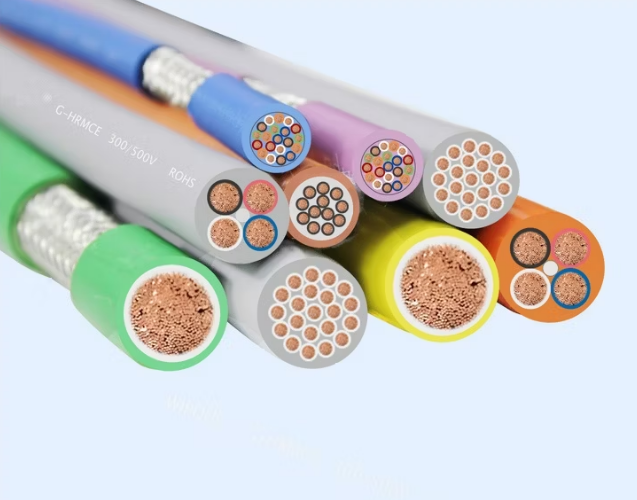
Conductor Material
As far as the choice of conductor material is concerned, selecting a cable for a 3-phase motor is a matter of importance. The performance, cost, and service life are all affected by the choice of conductor material. Copper is the most common choice because its better conductivity allows a given size to carry more current. For instance, a 10 AWG copper cable has an ampacity of roughly 30 amps, while an equivalent aluminum conductor of that size can only carry about 24 amps. This means copper cables can be smaller and lighter for the same application, making them a preferred choice for compact installations where space is limited.
With motors with higher power requirements, the difference between copper and aluminum becomes more apparent, such as with a 100 HP motor operating at 460V and drawing close to 124 amps. The size would increase to a 1/0 AWG copper cable, which has an ampacity of 150 amps, whereas if using aluminum, it would need to be manufactured in a 3/0 AWG cable to yield 155 amps. While aluminum cables cost less, often by 30-50% per foot, the increased size and weight can complicate installation, especially in tight spaces or when going long distances.
In high-temperature or corrosive environments, the choice of material will have much greater effects in terms of lifespan and safety. This is because copper is more resistant to corrosion compared to aluminum, making it superior to use in marine or industrial applications that involve moisture or chemicals. For instance, in a saltwater environment, an unprotected aluminum conductor may corrode in a few years, whereas copper, if properly insulated and protected, may last for more than 10 years. Its higher melting point also gives it an extra margin of safety in those applications that are prone to high thermal loads: 1,085°C for copper versus 660°C for aluminum.
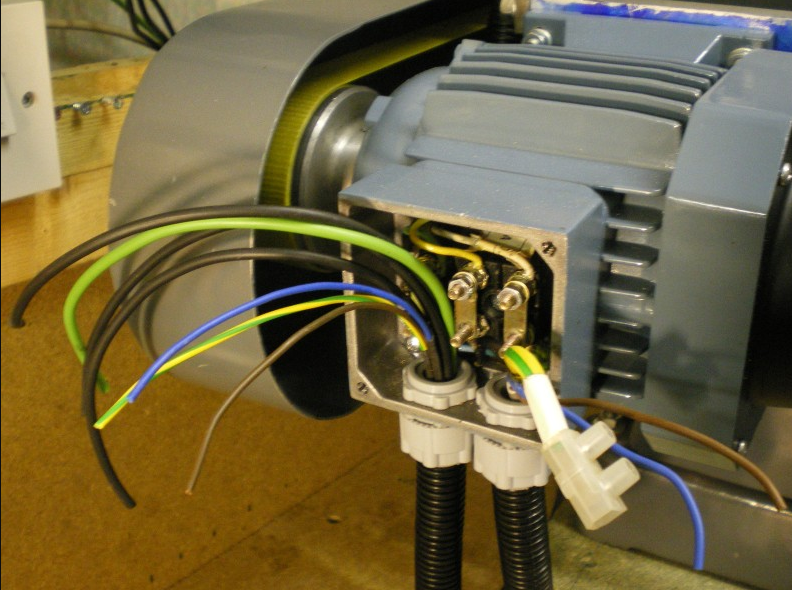
Insulation Type
The type of insulation a cable has is a cardinal factor in making sure safety and performance are observed when powering a 3-phase motor. There are a variety of insulation materials designed to operate in a number of different environmental and operating situations, including temperature, moisture, and chemical exposure. For normal applications, PVC insulation is mostly used since it is a cheaper, versatile material. A 600V-rated PVC-insulated cable will work at an efficient level up to 75°C in normal conditions. In specific, for general usage in residential and light industrial application, a 10 HP motor running at 230V pulling 28 amps can adapt a 10 AWG PVC-insulated cable.
Whereas for application at high temperature capabilities, XLPE is stronger and could bear 90°C or 110°C depending on the design. For example, a 50 HP motor operating on 460V and 65 amps on full load in a high-temperature factory environment may necessitate the use of a 4 AWG XLPE-insulated cable to maintain safety and negate thermal degradation. XLPE cables cost about 20-30% higher than their PVC counterparts, but their capacity to withstand higher temperatures and resist chemical exposure makes them quite economical to use for these hazardous environments.
For outdoor and underground applications, insulation types such as EPR or HDPE are very well suitable due to long-term durability and resistance to water and UV exposure. A specific example could be using a 1/0 AWG EPR-insulated cable for a 100 HP, 460V, and 124 A drawing motor in a pumping station application. The ability of EPR to remain flexible at low temperatures adds more safety margins due to its excellent dielectric properties, especially in flood and extreme weather-prone areas. These cables may cost anywhere from $3 to $5 per foot, depending on the size and specific design needs.
Cable Size
A proper-sized cable for a 3-phase motor is necessary to ensure efficiency in its power delivery and prevent safety hazards. The size of the cable can be determined based on the motor’s requirement in terms of current, the length of the cable run, and environmental conditions. For a 10 HP motor operating at 230V, pulling 28 amps, a 10 AWG copper cable is normally used for a short run of up to 50 feet. However, when the distance increases up to 150 feet, voltage drop becomes considerable, and an upgrade to an 8 AWG cable would reduce resistance and maintain proper voltage levels at the motor terminals.
In larger motors, such as a 50 HP motor running on 460V and drawing approximately 65 amps, distances of up to 100 feet can be adequately fed using 6 AWG copper cable. Exceeding 200 feet would require a voltage drop consideration into account that would necessitate the utilization of a 4 AWG cable in order to keep it within the acceptable 3% drop. A small cable, when utilized, could drop beyond the 5%, resulting from inefficient operation of the motor, overheating, and hence shortening its lifespan. Depending on the specific 6 AWG versus 4 AWG cable, the cost difference for a 200-foot run could be anywhere between $150 and $250. This upfront investment saves them from long-term energy losses and damaged equipment.
For heavy-duty applications—a 100 HP motor running at 460V with a full load current of 124 amps, for instance—a 1/0 AWG copper cable would be typically required for runs up to 100 feet. Runs of 300 feet may require as large as a 3/0 AWG cable to help prevent voltage drop and loss of power. These 3/0 AWG copper cables can cost upwards of $5 a foot. This provides assurance of continuity of critical industrial operation with adequate, sufficient power. Using an undersized cable in such a scenario could lead to overheating and tripping of the protective devices, hence frequent downtime.
Shielding Requirements
Shielding needs for cables in 3-phase motor applications depend heavily upon the operating environment and on the possibility of EMI. Motors in industrial settings are most of the time either generating or exposed to EMI that disrupts other electronic equipment or signal transmission. For instance, a 10 HP motor, operating at 460V in the industrial workshop with VFDs, usually requires shielded cables to avoid EMI, thus not interfering with sensitive instruments. In such instances, the foil shield with a drain wire normally suffices to suppress low-level interference, which adds about $0.50 to $1 per foot compared to unshielded cables.
Motors that operate on VFD drives involve even more serious shielding, as such a drive switches at very high frequency and thus produces large amounts of EMI. A connected 50 HP motor to a VFD operating at 460V may call for a braided shield or combination shield—foil and braid—to effectively suppress the noise. Braided shields offer coverage of 85-95% with a great reduction in interference. For instance, a shielded cable with a braided shield could be as high as $4 per foot for a 6 AWG, while its unshielded version is $2.50 per foot. However, this very much guarantees the motor’s performance without malfunctioning onto other systems nearby.
In surroundings where multiple motors and high-speed communication lines are operational, like automated factories, shielding is inevitable in order to minimize crosstalk between cables. Based on the premise above, a 100 HP running on 480V drawing 124 amps will see its requirements amply met with a cable rated 1/0 AWG with a double shield, both foil and braid. While double shielding will offer immunity against EMI, it offers better grounding, thus reducing ground loops. Double-shielding can add over $6 per foot in cable cost. However, the added reliability from such cables often justifies the cost in harsh environments.
Environmental Conditions
Environmental conditions play a significant role in selecting the right cable for a 3-phase motor, as they determine the insulation material, jacketing, and overall cable construction required to ensure safety and reliability. For example, in a typical indoor factory environment with ambient temperatures ranging from 20°C to 40°C, PVC-insulated cables rated for 600V are a common choice. A 10 HP motor running at 230V and drawing 28 amps can be effectively wired using a 10 AWG PVC-insulated cable, costing around $1.50 per foot. However, in higher-temperature environments, the same PVC cable may degrade over time, leading to insulation failure.
In outdoor applications exposed to direct sunlight, cables with UV-resistant jacketing are essential. For instance, a 50 HP motor operating at 460V and drawing 65 amps in a rooftop installation requires cables with UV-resistant materials like HDPE or specially treated PVC. These cables prevent cracking and degradation due to prolonged sun exposure. A 6 AWG UV-resistant cable for such applications might cost approximately $3 per foot, offering a long-lasting solution compared to standard PVC cables, which may fail within a few years under harsh sunlight.
For motors operating in wet or submerged environments, such as a 100 HP motor driving a water pump in a flood-prone area, cables with water-resistant or waterproof jacketing are crucial. EPR-insulated cables with a robust outer sheath of CSP (chlorosulfonated polyethylene) are ideal for these situations. A 1/0 AWG cable with these properties, rated for 600V, could cost around $5 per foot. These cables can remain operational even when fully submerged, ensuring reliable performance and reducing the risk of electrical faults due to moisture ingress.
